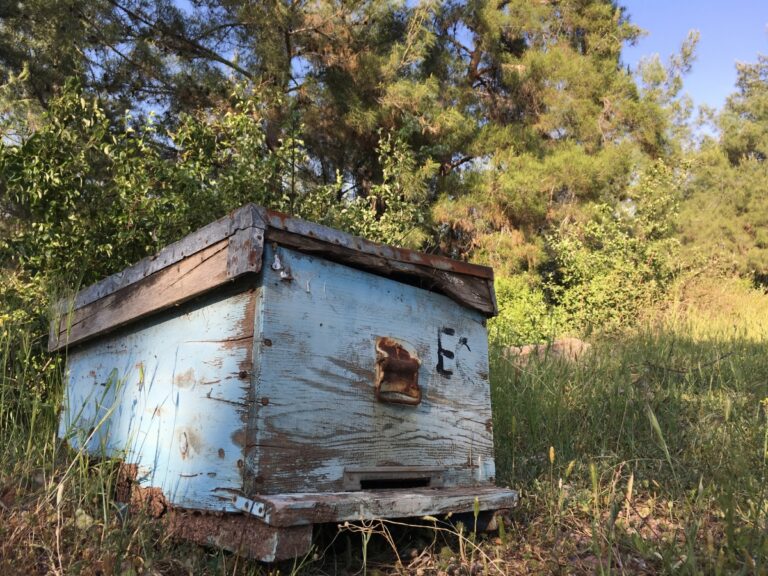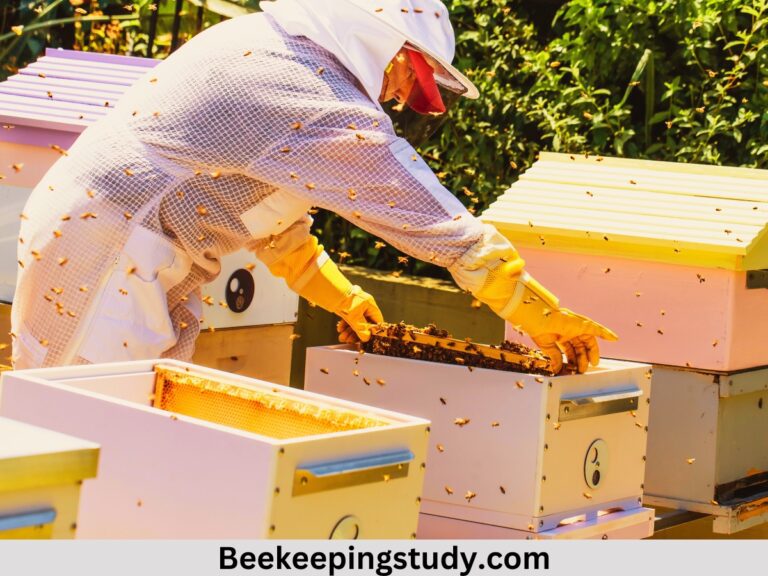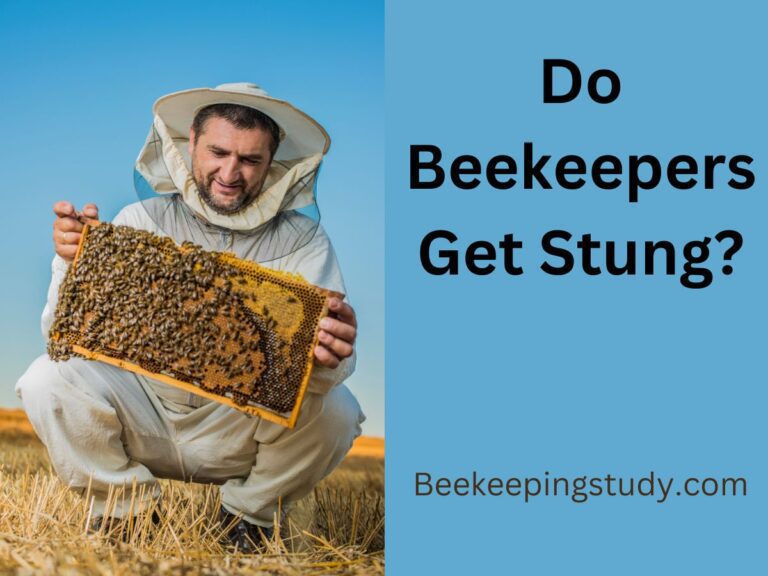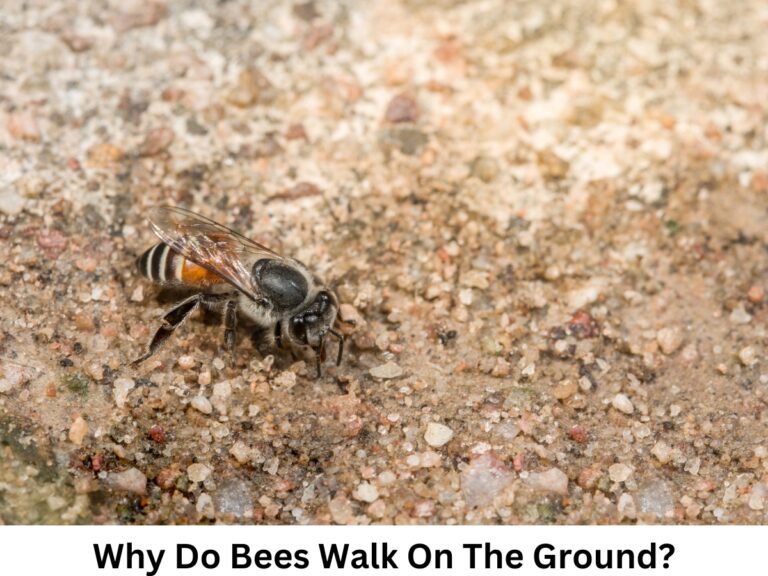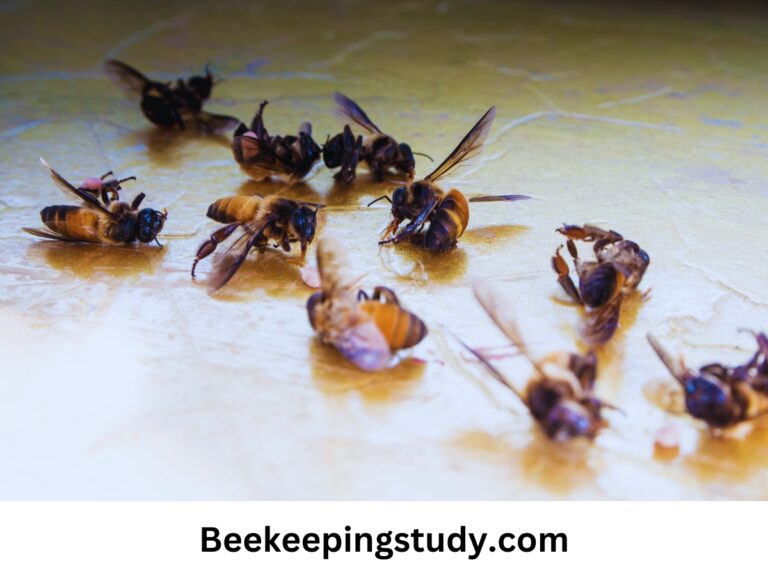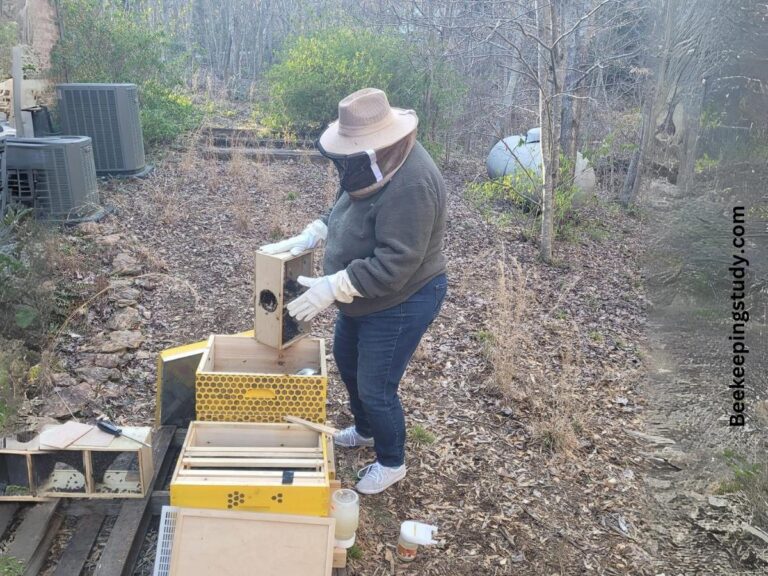This post might be created with help from AI tools and carefully reviewed by a human (Anthor Kumar Das). For more on how we use AI on this site, check out our Editorial Policy.
Can You Harvest Honey With Mold On The Frames [Proper Solution]
Due to excessive moisture inside the hive, molds may build up within frames. In such a case, the main concern is “can you harvest honey with mold on the frames?“
It might be disappointing when you go to extract honey and find lots of mold on the frames. In this article, we will try to discover the best solution for such a case.
A few years ago, I discovered bee traffic around my hive was gradually decreasing. One day, I found that the bees were gone and had abandoned the hive.
I didn’t find any sign of disease inside the hive. So, I decided to reuse the abandoned beehive. Before reusing it, I was hoping to extract honey from it. But discovered molds have grown and covered the capped honey.
I was not sure if it was safe to extract honey from those moldy frames. Then an expert beekeeper called Abdul Halim helped me to overcome the situation. That’s what I will share with you in this post.
So, the following things you will get to know after reading this blog post.
- Detailed answer to your question “Can you harvest honey with mold on the frames?”.
- What to do with the frames that have mold on them?
- How to prevent mold buildup inside the beehive.
How Molds Start To Build Up On Frames
The main reason that starts building mold is excess moisture. If your bees are unable to produce enough heat inside the hive, moisture may grow up. With the increase in moisture, mold build-up will also increase on frames.

Fungi are responsible for building molds within frames. These molds can be white, grey, or yellow. It is totally a common phenomenon for beehives. Honeybees are familiar with how to remove molds from beehives.
So, if the mold has just started to grow up honey bees will clean it on their own. Because they give higher priority to reusing the same frames. Those frames might contain capped honey or capped broods, which are very crucial for the colony’s health.
So, they can handle frames having small molds.
When there is excessive moisture in your hive, bees might not be able to clean molds from frames. Because they are having a worse time providing ventilation inside the hive. So, the molds will be an extra unwanted problem for them.
In such cases, bees might swarm away, or an entire hive might die. So, you can understand that molds in a hive are common, but excessive mold can be a harmful sign. Excessive molds mean excessive moisture inside the hive.
In my case, there were several reasons behind the mold growing on the frames. I have placed 3 honey supers before winter. This invokes a lot of trouble for the bees.
The extra super was found almost empty. This super causes the problem because it forces the worker to work more, and it also takes up more space.
So, the worker was having a tough time before winter to collect extra honey. Also, during winter, they were having difficulties producing sufficient heat. As a result, molds grew.
There can be other reasons behind molds starting to build up in frames. The following are the possible reasons for molds on frames.
- Excess moisture inside the hive.
- Poor Ventilation mechanism.
- American Foulbrood or such kind of bacterial infection.
- Infection by other honey bee diseases.
- Having extra super inside the hive.
- Having mite infection.
- Environmental contamination.
- Hive debris.
- Weak Colonies.
- Poor hive maintenance.
- Ucapped honey with water content above 20%.
Can You Harvest Honey With Mold On The Frames
Most honey molds, such as Penicillium, Aspergillus, and Cladosporium, are introduced via environmental contamination, nectar, pollen, or moisture in the hive. Honey itself is typically inhospitable to mold growth, but mold can develop on unsealed comb or frames stored in damp conditions.
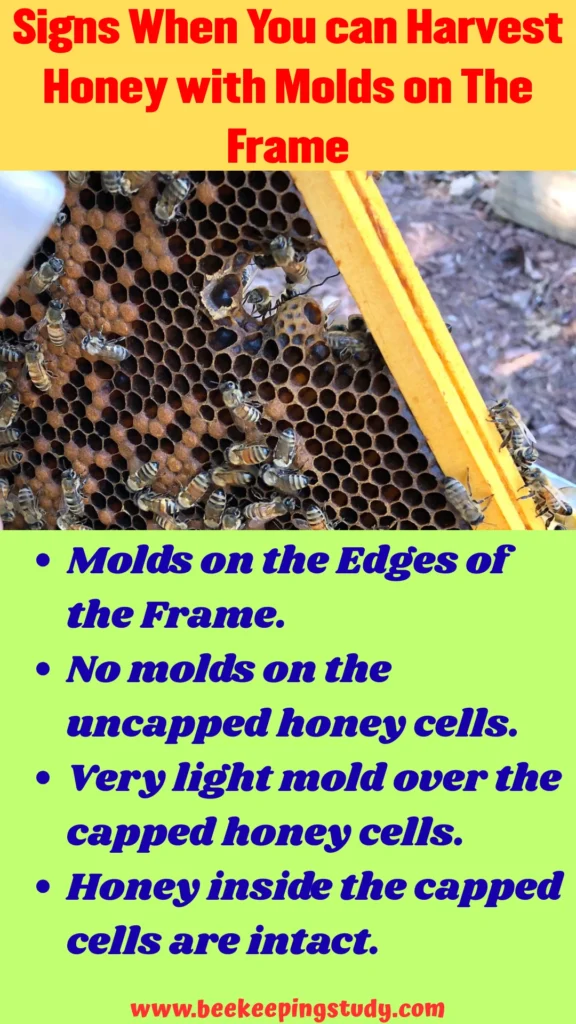
Is the Honey Inside Safe?
So, the main concern is “Can we harvest honey with mold on the frames?” In most cases, we can. If honeycomb cells are fully capped and sealed, the honey inside is usually safe. The microbial environment inside sealed cells protects the honey from mold, even if mold appears on the surface or on wood.
Beekeepers often report that honey beneath mold on the frame remains edible and tastes unaffected if properly filtered.

So, if the honey seems to be intact and capped inside, it is totally safe to be extracted. Also, if the molds are at the edges or around the capped cells but the honey itself is intact inside, it is safe for consumption.
To extract honey, you have to remove the molds, and then you can harvest honey on those frames. If the molds are not hard, you can remove them using the honey extraction knife.
How To Extract Honey From Moldy Frames
Yes, I’ve actually extracted honey from moldy frames, and I followed the advice of my beekeeping instructor while doing it.

Here’s exactly what I did:
- Removed the Moldy Frames: I carefully took the affected frames out of the hive.
- Placed Them in Direct Sunlight: Sunlight helped dry out the moisture that caused the mold in the first place.
It also slowed down further mold growth and even started to melt the surface mold. - Scraped Off the Mold: Once the frames dried, I gently removed the visible mold using a clean knife.
- Reused Some Frames for a New Nuc: I selected 3 of the best-looking frames that were full of honey and placed them into a new nuc colony.
- Stored the Remaining Frames: The rest of the frames were placed inside a honey-warming cabinet for about a week.
This helped reduce any remaining moisture and made the honey easier to extract. - Extracted the Honey: After the mold was fully cleaned off, I went ahead and extracted the honey from those frames.
- Sterilized the Honey: As a final step, I sterilized the honey and used it personally for myself and my family.
Can Freezing Help?
Yes. Freezing frames for 48–72 hours kills wax moth spores, small hive beetles, and other pests without damaging the honey. After thawing, allow frames to dry thoroughly before reusing or harvesting.
Is It Safe To Eat Such Honey
I have consumed the honey extracted from the moldy frames. It didn’t cause any infection in me and my family members. But it was seen that the quality of the honey became lower. Also, the taste also degraded.
Molds in frames are totally common inside beehives. After removing those molds and sterilizing, the honey is safe to consume. However, its nutrients may degrade during the sterilizing process.
Safety Tips and Limitations
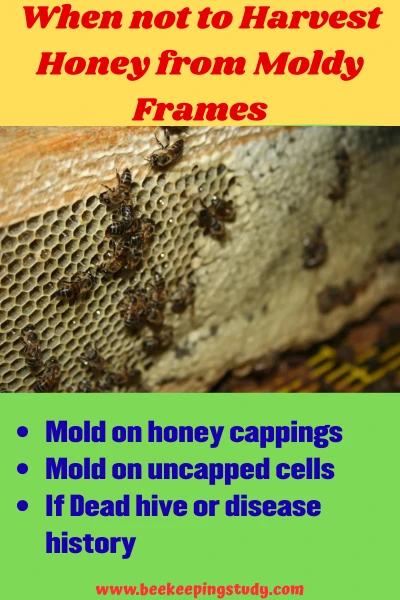
You must be aware of the following situations:
- If mold is visible on honey cappings, extraction is not recommended for human consumption. Surface mold could indicate moisture-related fermentation or contamination.
- Mold may produce mycotoxins, which are harmful even at low levels—especially certain strains like Penicillium or Aspergillus that can produce toxins such as ochratoxin A or citrinin.
- If a hive collapsed due to disease (like American foulbrood), the entire hive contents should be considered unsafe even if mold is not visible. These spores can survive decades and spread disease.
The following table will guide you on what to do in which conditions in case of moldy frames.
| Condition | Action |
|---|---|
| Frames with mold on wood or edges, but cells are fully capped | Safe to harvest the honey → filter well. Allow honey to flow; mold stays outside comb. Remove frame, dry it, and consider cleaning before reuse. |
| Mold on honey cappings or uncapped cells | Do NOT harvest for human use. Better to feed to bees or compost. Bees may clean frames over time. |
| Dead hive or disease history | Discard frames or decontaminate thoroughly. Freezing and sterilization may not remove spores like those of foulbrood. |
What To Do With Moldy Frames
The best thing you can do with moldy frames is to reuse them. Let the frames dry out and then place them inside strong colonies. If you have multiple moldy frames, you may place them in multiple beehives after removing the molds.
You will reuse a moldy frame after sterilization only if its foundation is in good shape and reusable.
In my case, I have used those 3 frames for starting a completely new colony. I have seen so many dead bees covered by the molds.
I was thinking, are these molds responsible for the death of those bees? Then I discovered these bees died because of mite attacks, not due to the molds. Also, during mite treatments, I have used Oxalic Acid (OA) wash.
Due to the excessive use of OA, a lot of bees have died. And molds are not responsible for their death.
So, I let the moldy frames dry out. Then I removed dead bees from these frames using needles. Then I used a new nuc and transferred them to that abandoned beehive. I placed these 3 frames inside this hive.
After a few days, I saw the bees already cleaned those molds from the frames. Also, they started to store more honey.
So, by reusing moldy frames, you can start a new colony. This will provide food storage for the bees. They will clean the molds. Also, this will be a good way to kick off their colony.
If you don’t want to build a new colony, you can merge it with other colonies. If you have 1 or 2 moldy frames, merge them with any of your existing strong colonies. If you have a large number of frames, then place them in different beehives.
But before reusing moldy frames, you should dry them out. Also, try to remove dead bees and waste from those frames.
How To Prevent Molds Build Up Inside the Hive
Having mold inside the hive is totally a common phenomenon. If you discover a small amount of mold starting to build within frames, don’t panic. Your bees will clean them up soon.

But if you see a continuous increase of mold on frames, then it could be a matter of worry. There could be several reasons behind this. First of all, you have to figure out the exact reason behind it. Then take the necessary steps to solve it.
Here are some tips that might be helpful for you to stop excessive molds inside the hive.
- Ensure Proper Ventilation: It should be the first priority to prevent mold from growing inside the hive. If there is poor ventilation, molds and diseases inside the hive will easily start to grow. You can use a moisture board or quilt box to provide proper ventilation during winter.
- Winterizing Hive: Before the winter, all beekeepers need to take some steps to winterize a beehive. You should also do so before the arrival of winter.
- Don’t Use Chemicals: Without proper knowledge, it is better not to use any pesticides in your beehive. You should consult with a specialist for mites and other treatments for your hive. You can use essential oils like lemongrass oil inside your beehive for various purposes instead of chemicals.
- Split and Merge Poor Colony: If you have a weak or overpopulated colony, split it and merge with another strong colony.
- Careful About Mite Treatment: During Mite treatment, don’t use excessive Oxalic acids. Consult with an expert beekeeper or pest control specialist before applying.
- No Extra Moisture, No Molds: You should ensure there is no extra moisture. Enough heat and dry colony won’t have much mold on frames.
- Inspect Less During Winter: Inspecting the hive often during winter may cause excessive moisture inside the hive. So, you should inspect less during this season. Also, you shouldn’t open your hive during bad weather conditions.
Final Takeaways
So, what’s the bottom line? Can you harvest honey from moldy frames? Let’s break it down:
-
Yes, you can often harvest honey from moldy frames – if cells are clean and capped, and you process honey carefully.
-
Dry, clean, or freeze moldy frames before reintroducing them to a strong hive. Bees will clean most mold themselves.
-
Never harvest honey with visible mold on cappings or if hive behavior or history indicates disease.
Remember, you can harvest honey with mold on the frames if you do it with the appropriate process. It is always suggested to reuse moldy frames with other colonies or to start a new colony. However, a smaller amount of mold is totally normal. Don’t get panicked.
If you need help, contact your local beekeepers who have experience with it. You can also contact us. We will be pleased to help you solve the problem.
Now you can check out another article on how much beekeeping costs for beginners.
Frequently Asked Questions
Can you eat moldy honeycomb?
You can eat moldy honeycomb if you remove the molds first. Let the moldy comb in a warmer place. Let the comb dry out. If possible remove dark molds. Then it is ready to consume.
Will mold hurt honey bees?
Absolutely not. Molds can be built over honey frames but it doesn't hurt them. Honey bees are also capable of removing these molds on their own.
What is the white stuff in my honeycomb?
They are probably molds. Because inside beehive molds can be grown up due to extra moisture. Molds can be white, yellow, and bluish.
Why does honey go Moldy?
Honey is produced through a fermentation process from pollen and nectar collected by bees. If there was moisture then bacteria or fungi may start to grow. As a result, honey may become moldy.
Regards
Beekeepingstudy


